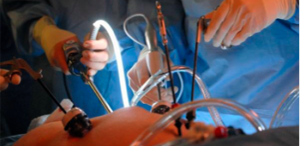
An intragastric balloon is a far less invasive weight loss procedure that has grown in popularity. Rather than rerouting the digestive tract, a balloon can be inserted into the stomach, inflated, and reduce the amount of calories ingested. The balloon is removed six months later, at which point patients will have lost a notable amount of weight.
Dr. Liza María Pompa González and the team at her Tijuana, MX weight loss surgery center would like to go over the recovery process once the balloon is in place. We’ll also cover the long-term recovery once the intragastric balloon is removed so you understand what to expect with regard to long-term care.
What to Expect Immediately After the Procedure
Once the intragastric balloon is in place, patients can expect some abdominal discomfort. This is normal given that you have a balloon in your stomach. This discomfort may last a few days to a few weeks. Eventually, patients will get used to the sensation of the intragastric balloon.
What to Expect in the First Two Weeks
Many intragastric balloon patients will experience minimal hunger in the first week or so after the surgery. Mild nausea may occur during this time when having some food, but patients should adjust to this after the first two weeks have past. Noticeable weight loss will take place thanks to reduced food intake and fewer sensations of hunger at this time. Eat your food slowly to help avoid nausea and acid reflux.
What to Expect in Weeks Three Through Six
Your appetite will increase during this time, which is a normal part of adjusting to the balloon. Patients should continue to eat food slowly as this will prevent nausea and discomfort while also reducing caloric intake to promote further weight loss.
What to Expect in Weeks Seven Through Twelve
Weight loss will continue, though at a much slower rate than the previous weeks. Patients should continue to eat slowly and focus on nutrient-rich, healthy foods. Patients should also focus on a healthy exercise routine to help promote further weight loss and long-term weight maintenance.
What to Expect in Weeks Thirteen Through Twenty-Six
At this point, patients are encouraged to think of ways to promote long-term healthy living. That includes a regular exercise routine, healthy eating habits, and modifications to their normal diet to reduce caloric intake.
Removal of the Intragastric Balloon
After six months, the intragastric balloon is finally removed. It is carefully deflated and then extracted.
Life After Intragastric Balloon Removal
With the intragastric balloon out, it’s now up to the patient to prolong the weight loss benefits experienced via the procedure. That means exercising regularly to promote an active, healthy lifestyle. This also means eating healthy foods, avoiding empty calories like those found in sodas and sweets.
We recommend that patients continue to eat foods slowly, which helps avoid overeating. If possible, try to eat five to six small meals a day, scheduled a few hours apart. This also helps you avoid overeating and while being more conscious about the kinds of foods you eat.
Contact a Skilled Bariatric Surgeon
For more information about intragastric balloon and why it may be the right option for you, be sure to contact a skilled bariatric surgeon and weight loss specialist. You can reach LIMARP® by phone in Tijuana at (664) 686-2542. You can also reach us toll free from the United States by calling (866) 279-8327.


